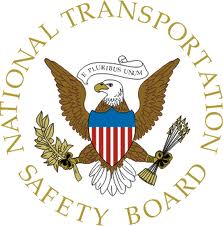The NTSB issued five Safety Alerts that focus on the most frequent types of general aviation accidents.
"Because we investigate each of the 1,500 GA
accidents that occur in the United States every year, we see the same
types of accidents over and over again," said NTSB Chairman Deborah A.P.
Hersman. "What's especially tragic is that so many of these accidents are
entirely preventable."

Each year, about 475 pilots and passengers are killed and hundreds more are seriously injured in GA accidents in the United States, which is why GA Safety is on the NTSB's Most Wanted List. (http://go.usa.gov/28DF)
A Safety Alert is a brief information sheet that pinpoints a particular safety hazard and offers practical remedies to address the issue. Three of the Safety Alerts focus on topics related to some of the most common defining events for fatal GA accidents. These include low-altitude stalls, spatial disorientation and controlled flight into terrain, and mechanical problems. The other two Safety Alerts address risk mitigation.
The five Safety Alerts issued yesterday are:
• Is Your Aircraft Talking to You? Listen!
• Reduced Visual References Require
Vigilance
• Avoid Aerodynamic Stalls at Low
Altitude
• Mechanics: Manage Risks to Ensure
Safety
• Pilots: Manage Risks to Ensure Safety
The NTSB is creating five short videos - one for
each Safety Alert - which will be rolled out this spring. The videos will
feature regional air safety investigators sharing their experiences and
observations of the many accident investigations they conducted as well as
advice on how pilots and mechanics can avoid mistakes that can have such
tragic consequences.
"GA is essentially an airline or maintenance operation of one, which puts the responsibility for sound decision making on one person's shoulders," Hersman said. "We are promoting and distributing the alerts to reach pilots and mechanics who can benefit from these lifesaving messages."
The five Safety Alerts approved today, as well as others that have been issued since 2004, are available at http://www.ntsb.gov/safety/safety_alerts.html. The presentations investigators made to the Board yesterday are all available at http://go.usa.gov/28bx.